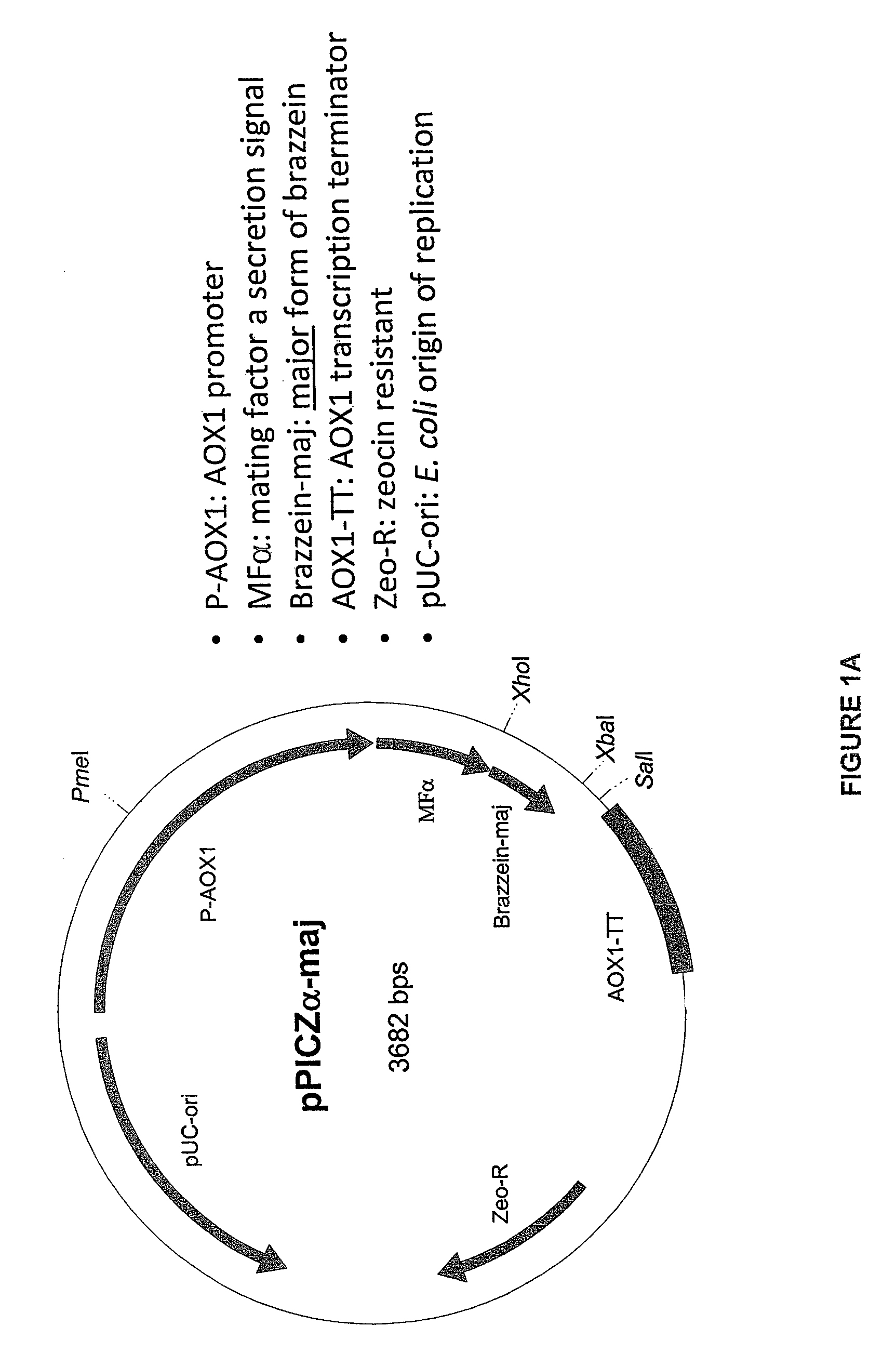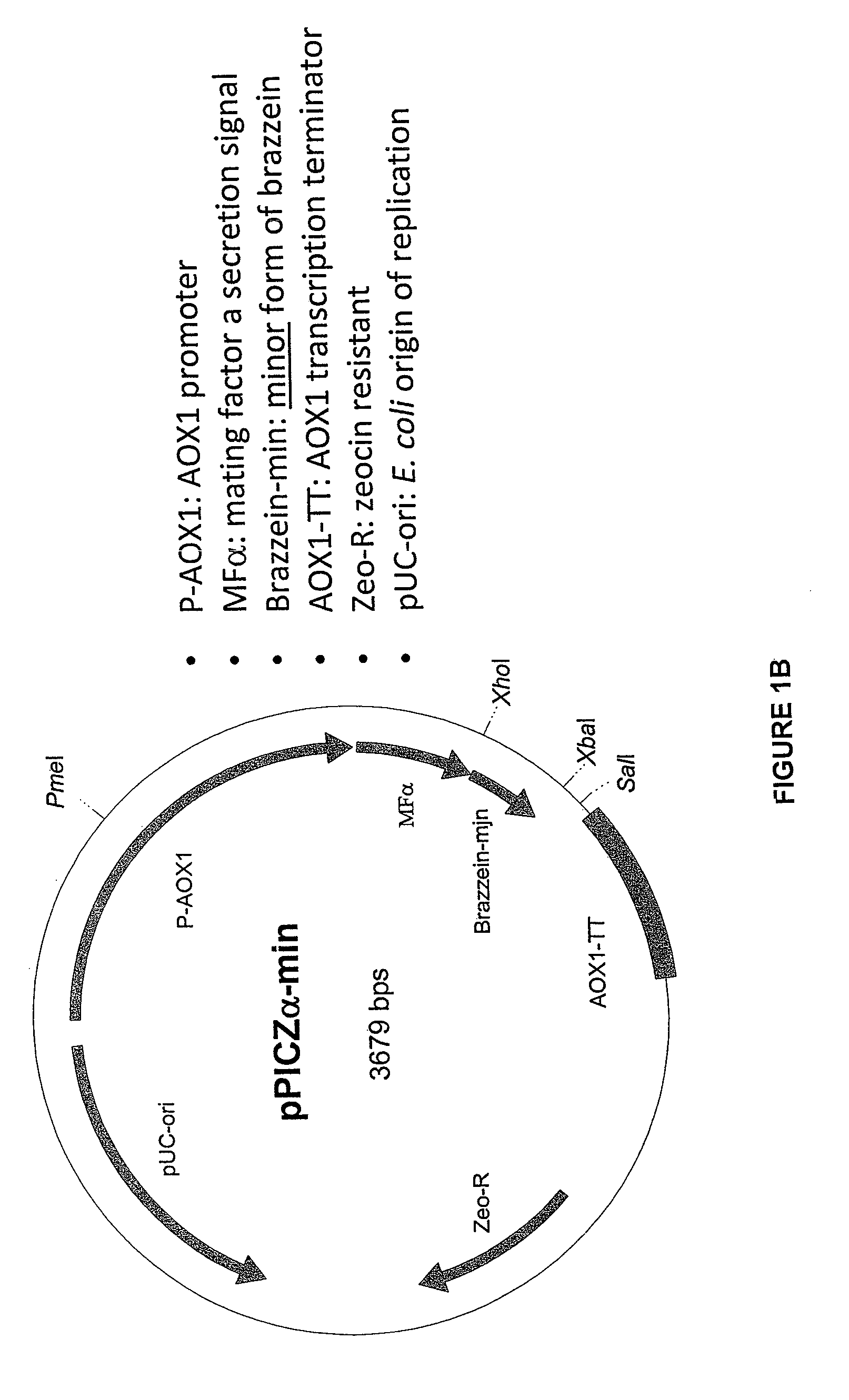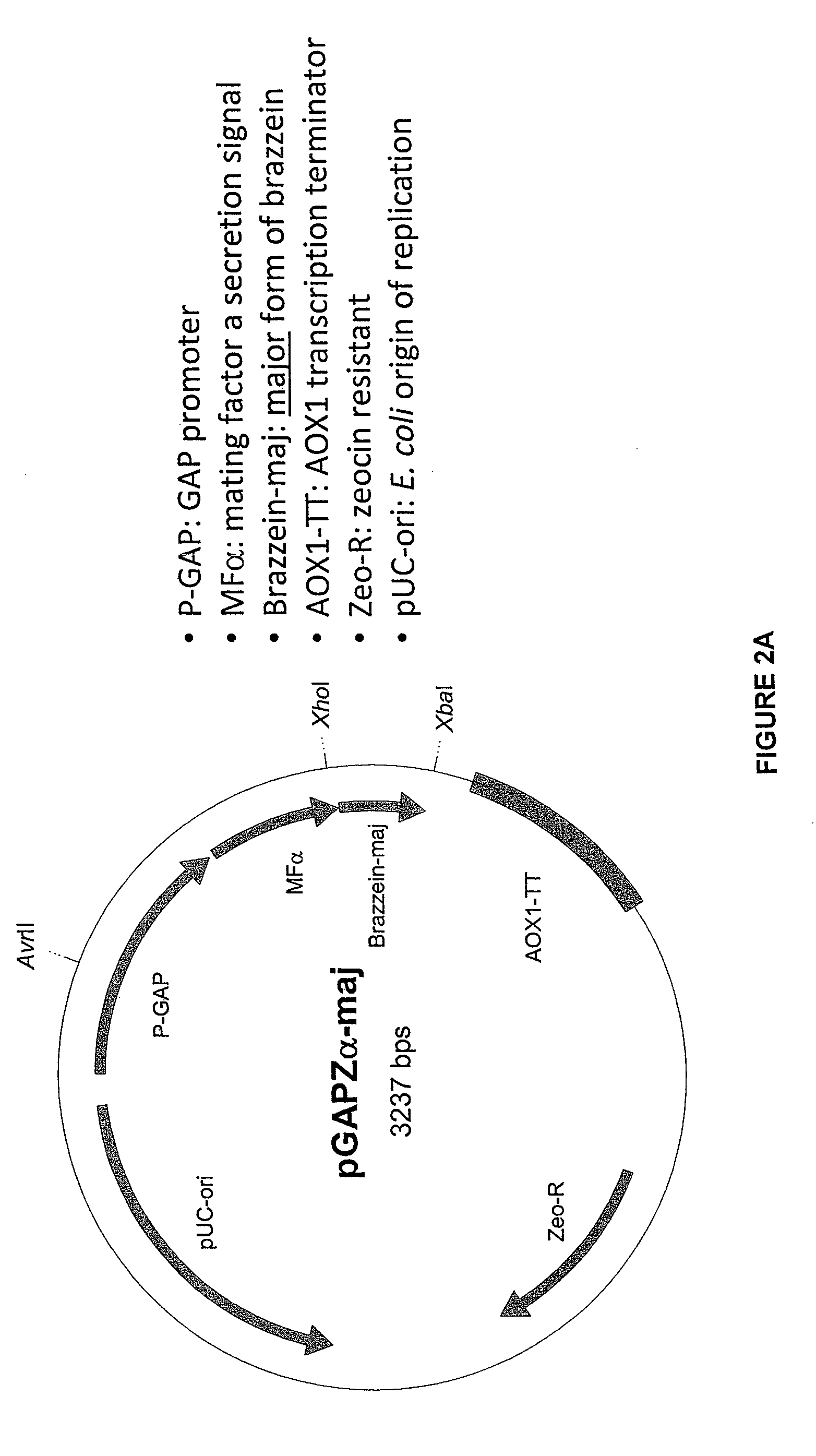Sweetener preparations and methods of use
a technology of sweetener and sugar, applied in the field of sweetener preparations, can solve the problems of low nutritional value of sugar, 40 million children are overweight, 300,000 premature deaths, etc., and achieve the effects of reducing the risk of tooth decay, reducing the risk of high-calorie sugar or sugar sweetener content, and being low-glycemic and/or diabetic-friendly
- Summary
- Abstract
- Description
- Claims
- Application Information
AI Technical Summary
Benefits of technology
Problems solved by technology
Method used
Image
Examples
example 1
[0077]Cloning the brazzein gene into aPichia pastoris expression plasmid and produce brazzein as a secretory protein by the recombinant P. pastoris strain.
Analysis of Brazzein DNA Sequence for Codon Optimization
[0078]The brazzein gene sequence is analyzed for codon-optimization for expression in yeast cells such as P. pastoris and / or S. cerevisiae. Codon Optimal brazzein sequence is synthesize for high expression in P. pastoris and S. cerevisiae. Candidate brazzein may include the major form,
[0079]
SEQ ID NO 31 EDKCKKVYEN YPVSKCQLAN QCNYDCKLDK HARSGECFYD EKRNLQCICD YCEY 54
the minor form,
[0080]
SEQ ID NO 41 DKCKKVYENY PVSKCQLANQ CNYDCKLDKH ARSGECFYDE KRNLQCICDY CEY 53
or variants and structural, functional analogs thereof.
[0081]Exemplary DNA sequences of the major form of brazzein (optimized for both Pichia and yeast) may include:
[0082]
SEQ ID NO 1 1 GAAGATAAGT GTAAGAAGGT TTACGAAAAC TACCCAGTTT CTAAGTGTCA ATTGGCTAAC 61 CAATGTAACT ACGATTGTAA GTTGGATAAG CATGCTAGAT CTGGTGAATG TTTTTACGAT121 ...
example 2
[0091]Cloning the brazzein gene into a Saccharomyces cerevisiae expression plasmid and produce brazzein as a secretory protein by the recombinant S. cerevisiae strain.
[0092]After constructing the 4 Pichia expression plasmids, the 2 forms of MF alpha-brazzein (major form and minor form of brazzein) fusion gene is amplified from pPICZ alpha-maj and pPICZ alpha-min. The same pair of PCR primers will be used to amplify the forms of MF alpha-brazzein. Forward primer (5′-AACCCCGGATCCAAACGATGAGATTTCCTTC-3′) (SEQ ID NO 5); reverse prime (5′-TGATGGTCGACGGCGCTATTCAGAT-3′) (SEQ ID NO 6). The forward and reverse primers contain BamHI and SalI cut sites, respectively (underlined). The BamHI site on the forward primer is upstream to the start codon of the MF alpha secretion signal. The PCR products is cloned into the BamHI / SalI site of yeast expression plasmid pESCHIS.
Expression of Brazzein as Secretory Protein by S. Cerevisiae
[0093]The brazzein gene (including codon-optimized for S. cerevisiae ...
example 3
Purification of Brazzein for Analysis
[0097]SDS-PAGE analyses are performed during expression study to monitor brazzein production by selected recombinant clones. brazzein expression level is estimated by comparing brazzein protein band intensity on SDS-PAGE gels to standard brazzein proteins loaded on the same gels. Bradford assay is performed to determine protein concentration after brazzein purification. Additional analytical assays, such as for example, determining the N-terminal sequence of brazzein and the MW of recombinant brazzein by MALDI-Mass Spectrometry are performed if needed.
[0098]One or multiple recombinant P. pastoris and / or S. cerevisiae clones is chosen for purification of recombinant brazzein. Since brazzein is a small 6.5-kDa protein and has been secreted out of the cells, a size-exclusion membrane filter is used to separate brazzein from other higher MW contaminating proteins. Since brazzein is a heat-stable protein, higher temperature is used to precipitate out ...
PUM
| Property | Measurement | Unit |
|---|---|---|
| molecular mass | aaaaa | aaaaa |
| temperatures | aaaaa | aaaaa |
| nucleic acid | aaaaa | aaaaa |
Abstract
Description
Claims
Application Information
 Login to View More
Login to View More - R&D
- Intellectual Property
- Life Sciences
- Materials
- Tech Scout
- Unparalleled Data Quality
- Higher Quality Content
- 60% Fewer Hallucinations
Browse by: Latest US Patents, China's latest patents, Technical Efficacy Thesaurus, Application Domain, Technology Topic, Popular Technical Reports.
© 2025 PatSnap. All rights reserved.Legal|Privacy policy|Modern Slavery Act Transparency Statement|Sitemap|About US| Contact US: help@patsnap.com



